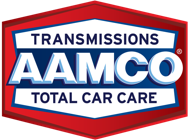A failing torque converter can disrupt your fall driving patterns by shuddering, or delayed acceleration. Recognizing early torque converter problems and scheduling proper transmission maintenance ensures smoother, safer driving as temperatures drop.
As fall temperatures settle in, so do new driving challenges. Cooler mornings, rain-slicked roads, and sudden temperature shifts can all affect how your car performs.
But one problem many drivers overlook isn't under the hood. It's part of the transmission.
The torque converter plays a key role in transferring power from your engine to your transmission. When it fails, your entire driving experience can suffer.
If you've noticed slipping or strange vibrations, your driving patterns may be exposing a bigger issue. Let's dive into how to recognize torque converter problems, what causes them, and how timely vehicle maintenance can prevent major repairs.
What Are the Symptoms If Your Torque Converter Is Going Out?
A torque converter that's starting to fail will usually give off warning signs. Ignoring them can turn torque converter problems into larger transmission issues leading to more expensive repairs.
Here are some of the most common symptoms.
Slipping Transmission
A slipping transmission feels like your car changes gears for no reason. When your torque converter isn't applying properly, power doesn't transfer smoothly.
You'll notice higher RPMs without a corresponding increase in speed. Over time, the slipping can cause your transmission to overheat.
Shuddering or Vibration
If your vehicle shakes or vibrates while driving at a steady speed, especially between 30 and 45 mph, you may have a torque converter problem. The internal clutch may be slipping, causing a noticeable shudder that feels like driving over rough pavement.
Delayed Acceleration
A healthy torque converter should deliver power immediately when you press the gas pedal. If you feel hesitation or sluggishness before your car picks up speed, it may indicate low transmission fluid or an internal mechanical fault.
Overheating Transmission
The torque converter relies on transmission fluid for cooling and lubrication. If the fluid is dirty or low, heat builds up quickly, causing transmission issues like:
- Burning smells
- Warning lights
- Slipping gears
Routine fall car care should always include checking fluid levels.
Unusual Noises
Whining, clicking, or grinding noises from the transmission area could point to worn bearings or damaged turbine fins inside the torque converter. These parts are critical for smooth power transfer.
Ignoring these symptoms can cause your entire transmission to fail. Always get a professional inspection before the problem spreads.
What Happens If I Keep Driving With a Bad Torque Converter?
Continuing to drive with a failing torque converter can cause widespread damage. Here's what can happen:
- Overheating: A malfunctioning converter generates excessive heat, which damages seals, clutches, and other components
- Contaminated fluid: Metal shavings or friction material can contaminate your transmission fluid
- Complete transmission failure: Prolonged driving under stress can lead to internal burnout
Even short trips can accelerate the damage. If you notice symptoms, it's best to visit a trusted shop like AAMCO SoCal before the issue worsens.
Understanding How a Torque Converter Works
The torque converter acts as a fluid coupling between the engine and transmission, replacing the clutch in automatic vehicles. It performs three main functions:
- Torque multiplication: Boosts engine torque to help your car accelerate from a stop
- Fluid coupling: Allows smooth transfer of rotational energy between the engine and transmission
- Lock-up clutch: Engages at higher speeds for direct power transfer to improve fuel efficiency
When any of these systems fail, your car may:
- Slip
- Shudder
- Lose power
How Fall Driving Patterns Affect Torque Converter Performance
Cooler weather and increased road debris can strain your vehicle's transmission. Here's how fall driving patterns can highlight converter issues:
- Temperature fluctuations: Sudden cold mornings followed by warm afternoons can affect transmission fluid viscosity
- Increased stop-and-go traffic: Fall events, school commutes, and changing weather can cause more idling and shifting
- Slippery roads: Extra gear changes on wet or leaf-covered roads test your transmission's ability to deliver consistent torque
Following proper transmission maintenance helps prepare your car for these seasonal stresses. Fall is the perfect time for a checkup to prevent winter breakdowns.
Preventing Torque Converter Problems Through Maintenance
Preventive vehicle maintenance is the best defense against torque converter problems. Here's what to focus on.
Regular Transmission Fluid Checks
Transmission fluid cools and lubricates the converter. Inspect for discoloration or a burnt smell. Replace fluid every 30,000 to 60,000 miles, or as recommended in your owner's manual.
Use the Right Fluid Type
Always use manufacturer-approved fluid. Incorrect fluid can reduce lubrication and cause internal wear.
Schedule Seasonal Inspections
Professional technicians can identify early wear before it leads to costly transmission issues. A fall inspection also ensures your car is ready for cold-weather driving.
Address Warning Lights Promptly
If your Check Engine or Transmission Warning Light turns on, don't ignore it. Many torque converter faults trigger diagnostic trouble codes (DTCs) that a technician can quickly diagnose.
Avoid Overloading Your Vehicle
Extra weight puts unnecessary stress on the converter. Keep your load balanced, especially if towing or driving in hilly areas.
Frequently Asked Questions
Can a Bad Torque Converter Damage the Entire Transmission? +
Yes, a failing torque converter can cause severe transmission issues if not addressed early. When the converter's clutch or bearings fail, metal or clutch debris contaminates the transmission fluid. This debris spreads through the system, damaging:
- Solenoids
- Pumps
- Valve bodies
Over time, the internal seals and friction materials degrade, leading to full transmission failure. Early inspection can prevent thousands in repair costs. Always have a professional check your converter if you suspect problems.
How Do Mechanics Diagnose Torque Converter Problems? +
Diagnosing torque converter problems involves several steps. First, technicians use a scan tool to check for stored error codes. Codes like P0741 or P2761 often indicate converter clutch or circuit faults. Next, they test-drive the vehicle to feel for slipping or shuddering. They may also measure fluid pressure and inspect for contamination. In some cases, technicians use a stall-speed test to see if the converter produces proper torque. If internal failure is confirmed, the converter is replaced or rebuilt as part of transmission maintenance.
How Much Does It Cost to Replace a Torque Converter? +
Costs vary depending on vehicle type and labor rates. On average, torque converter replacement costs range from hundreds to a couple of thousand. The wide range comes from whether the converter alone is replaced or if internal transmission repairs are also needed. Labor makes up most of the expense since accessing the converter requires removing the transmission. Preventive fall car care and timely fluid changes can help avoid these high repair bills.
How Long Does a Torque Converter Last? +
A quality torque converter can last over 100,000 miles with proper care. However, harsh driving, poor fluid maintenance, or towing heavy loads can shorten its life. Following a consistent vehicle maintenance schedule and addressing warning signs early ensures long-term reliability. AAMCO SoCal technicians often find that converters fail prematurely due to neglected fluid changes or clogged cooling lines.
Can Transmission Additives Fix a Bad Torque Converter? +
Transmission additives may provide temporary relief by improving fluid lubrication, reducing internal friction, or quieting minor noises. However, they won't repair mechanical damage. They can sometimes help older transmissions shift more smoothly for a short time, but once internal components are worn, additives cannot reverse the damage. If the clutch, stator, or turbine inside the converter is worn or damaged, the only permanent fix is professional replacement.
In some cases, additives can even thicken or alter the fluid's chemical balance, leading to overheating or clogged passages. While they might delay symptoms temporarily, they also risk hiding deeper issues that require immediate transmission maintenance. Always consult a certified transmission specialist before adding any chemicals to your system. Professional guidance ensures that your transmission remains protected and operates safely over time.
Why Does the Car Shudder Only at Certain Speeds? +
Shuddering often occurs during the torque converter's lock-up phase, usually between 30 and 50 mph, when your car transitions to a more direct power transfer. During this phase, the internal clutch engages to create a solid mechanical link between the engine and transmission, reducing slippage for better fuel efficiency. If the clutch slips, engages unevenly, or fails to lock fully, you may feel a pulsing or vibration that grows stronger as the vehicle maintains speed. Low fluid, fluid contamination, or worn clutch materials inside the converter are common culprits. These issues can lead to overheating or accelerated wear if ignored. In some cases, a dirty valve body or failing solenoid may cause erratic lock-up behavior, compounding the shudder. Addressing the issue early with a professional diagnosis:
- Helps prevent damage to internal components
- Restores power transfer efficiency
- Ensures smooth driving
How Do I Know If My Transmission Fluid Is Causing the Problem? +
Transmission fluid issues often mimic torque converter problems, which is why examining the fluid closely can reveal a lot about your transmission's health. Begin by checking both color and smell. Healthy fluid should be a bright red or pink on many vehicles with a clean, slightly sweet scent, indicating proper lubrication and temperature control. If the fluid appears dark, brown, or black, or emits a burnt odor, it suggests overheating, oxidation, or friction material wear. Gritty texture or metal shavings on the dipstick can point to internal component damage. Regular fall car care should include checking, flushing, and replacing transmission fluid as needed based on mileage and driving conditions. Keeping the fluid clean not only improves shifting quality but also:
- Prevents clutch and bearing wear
- Reduces heat buildup
- Enhances long-term performance and reliability
In cooler months, clean fluid ensures smoother cold starts and more consistent pressure across the system.
What's the Difference Between a Torque Converter and the Transmission Itself? +
While both systems work together, they perform distinct roles that are critical to your vehicle's overall performance. The torque converter acts as a hydraulic bridge, transmitting rotational energy from the engine to the transmission while multiplying torque to help your vehicle accelerate from a stop. The transmission, in turn, controls and adjusts gear ratios to balance speed, torque, and fuel efficiency based on driving conditions. When the converter malfunctions, it disrupts this balance, causing:
- Irregular shifting
- Reduced power delivery
- Possible overheating
Proper transmission maintenance is necessary, including:
- Routine fluid checks
- Filter replacements
- Professional diagnostics
This ensures both systems function harmoniously for:
- Smooth driving
- Reliable acceleration
- Improved long-term fuel economy
Are Torque Converter Problems More Common in Fall or Winter? +
Temperature changes during fall and winter can reveal hidden torque converter problems. Cold weather thickens transmission fluid, making it harder for the converter to circulate it. As a result, symptoms like slipping or shuddering may become more noticeable. Performing seasonal vehicle maintenance, including fluid replacement and system inspection, prepares your car for lower temperatures.
Should I Repair or Replace a Bad Torque Converter? +
If diagnosed early, minor torque converter problems can sometimes be repaired rather than replaced. In some cases, replacing a faulty clutch solenoid, or cleaning the fluid system and cooling lines may restore smooth operation and prevent larger transmission issues. Technicians might also reprogram the transmission control module or flush contaminated fluid to remove debris. However, if the converter shows signs of internal damage, such as warped turbine blades, burnt clutch material, or fluid leaks, full replacement is often more cost-effective in the long run. Trust certified technicians at AAMCO SoCal to inspect, diagnose, and explain your options so you can make an informed repair decision for your vehicle.
Ensure Safe Fall Driving With Proper Transmission Maintenance
As your fall driving patterns shift with the season, don't overlook what's happening under your hood. A failing torque converter can turn a smooth commute into an expensive repair. Early detection and professional transmission maintenance keep your car reliable and ready for the road ahead.
Drivers across Southern California trust AAMCO SoCal for their vehicle maintenance because of The AAMCO Difference, which is quality workmanship, superior customer care, and dependable warranty coverage backed by over 50 years of transmission expertise.
Don't wait for your car to break down this fall. Find a center near you today.

 Schedule Appointment
Schedule Appointment















